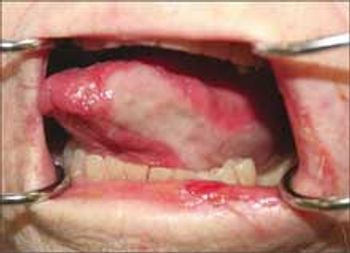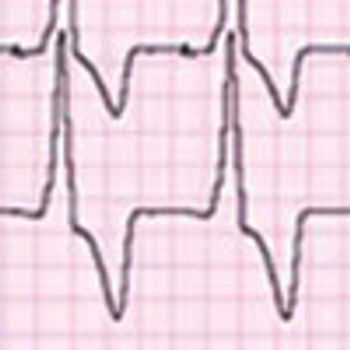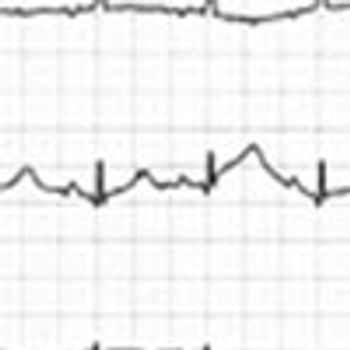
An 89-year-old woman is seen because of a white area on the tongue. She has been hospitalized on a behavioral health unit for 2 weeks; 1 day ago, enoxaparin was begun for a new left leg deep venous thrombosis. Recent antibiotic therapy for a urinary tract infection; candidal vulvitis followed and was treated with topical clotrimazole. Has penicillin allergy.
































































































































































































































































































